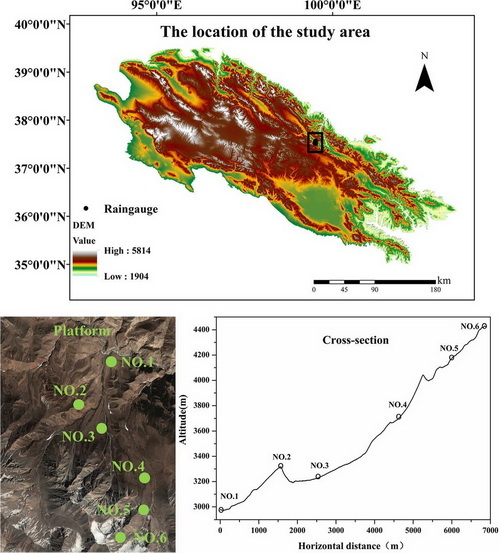Precipitation-Altitude Relationships on Different Timescales and at Different Precipitation Magnitudes in the Qilian Mountains
Updatetime:2017-12-15From:
【Enlarge】【Reduce】
It is generally accepted that altitude is the main variable governing the spatial distribution of precipitation in the mountains.
This study mainly discusses the precipitation-altitude relationships on different timescales and at different individual precipitation magnitudes in the entire study period (April 2012 to September 2015), wet season (May to September), and dry season (October to April0, and tries to find a threshold to determine whether the correlation between precipitation and altitude is significant.
In this study, the half-hourly data, including precipitation, wind speed, and air temperature, from April 2012 to September 2015 are obtained by six automatic meteorological stations located on the north slope of Qilian Mountains, which range from 2980 to 4484m a.s.l., and horizontal distance is approximately 7000 m.
Results indicate that (i) if all samples in the entire study period area to be investigated, the individual precipitation had to reach about 30 or 40 mm, then the sample may pass the significance test at p<0.05 or at p<0.01, respectively.
The thresholds in wet season are same as that during entire study period. The thresholds in dry season are about 10 and 15 mm (ii) with increasing timescale, the percentage of samples that pass the test increases.
However, it is until the monthly scale whether it is wet or dry season or the entire study period, the precipitation-altitude relationships have statistical significance and using the monthly or yearly scale as the time unit can be better applied to the research, which is based on the precipitation-altitude relationships.

Study area and distribution of stations. (Image by NIEER)
Appendix




